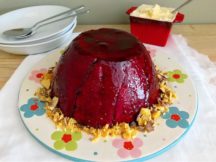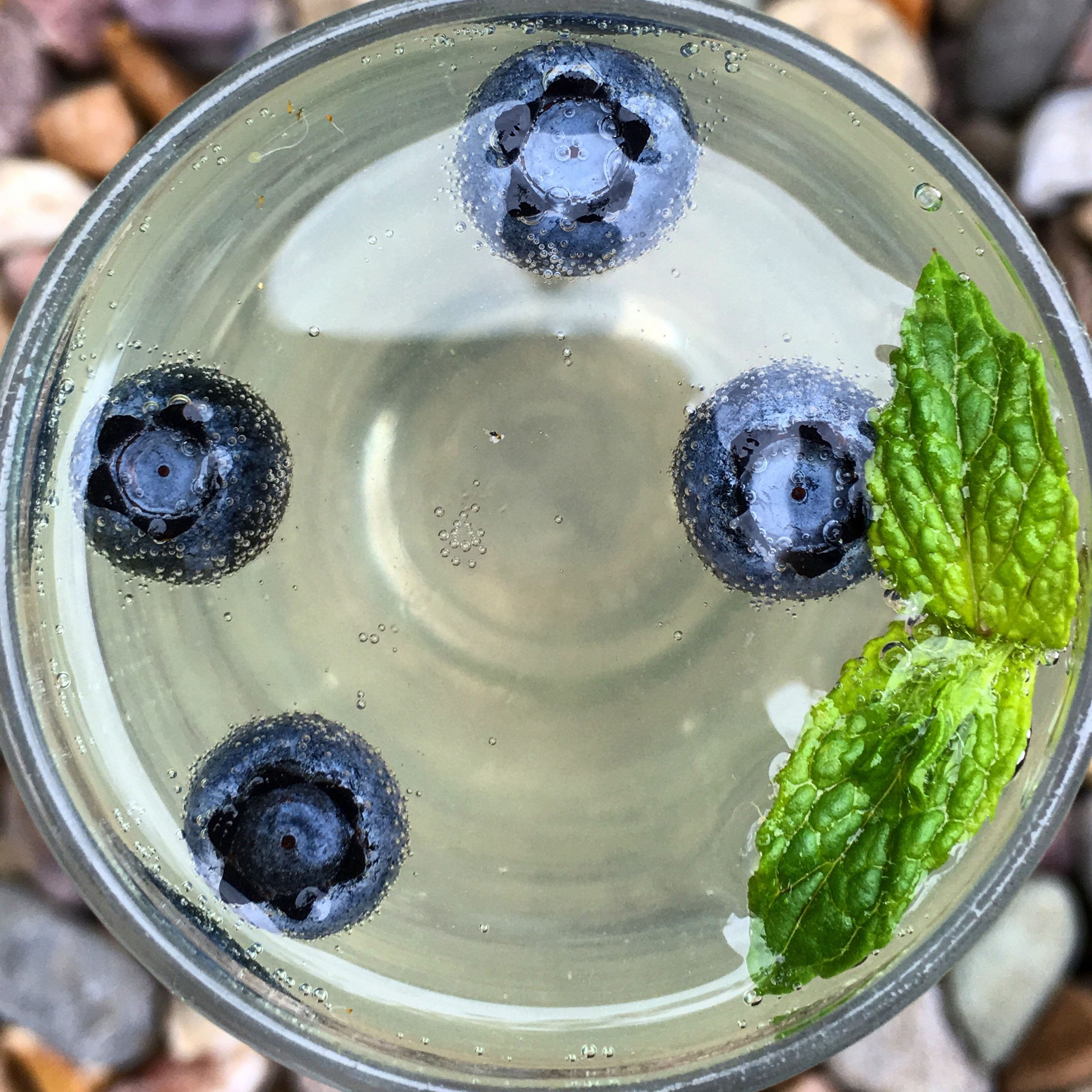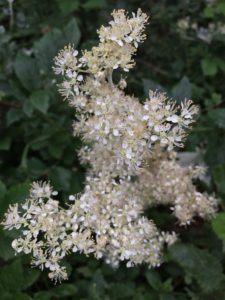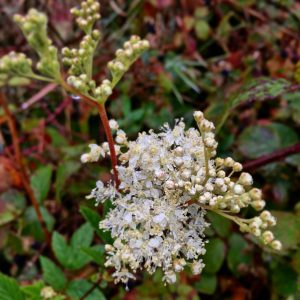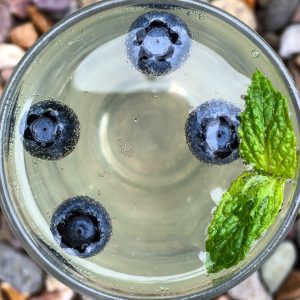A couple of years ago, I started experimenting with Meadowsweet – a wild plant festooned with flowers that have a honey-like aroma that blooms in late summer and into early autumn.
My first foray was to make Meadowsweet Cordial with it, and since then it has supplanted Elderflower Cordial, superior as it is in pretty much every way!
Since then, at this time of year I seek to find ways that I can add it into other things, and I’ve always been a believer that what grows together goes together, so no surprises then that I frequently pair Meadowsweet with its seasonal berry cousin, the Blackberry.
This recipe is basically a Summer Pudding but just with a few little twists to elevate it, and really make it work for the seasonal fruits of the year.
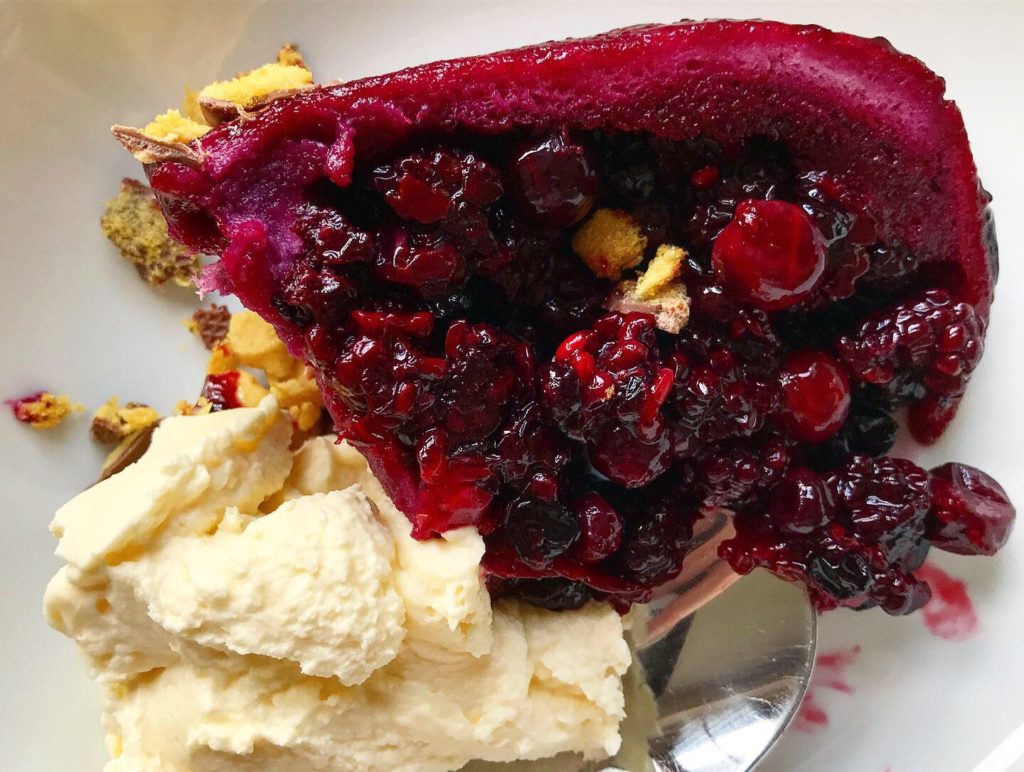
Meadowsweet Cream
In my recipe, I used four fruits together: fresh blackcurrants and redcurrant, and the final remnants from the freezer of last years’ autumn blackberry harvest, and the early summer Wild Bilberry harvest. Frankly, you can use any fruit for this, although I would suggest staying away from strawberries (fresh or frozen), and maybe just get out there, pick some free, wild blackberries and then see what you can find from you local farmers’ market and go from there!
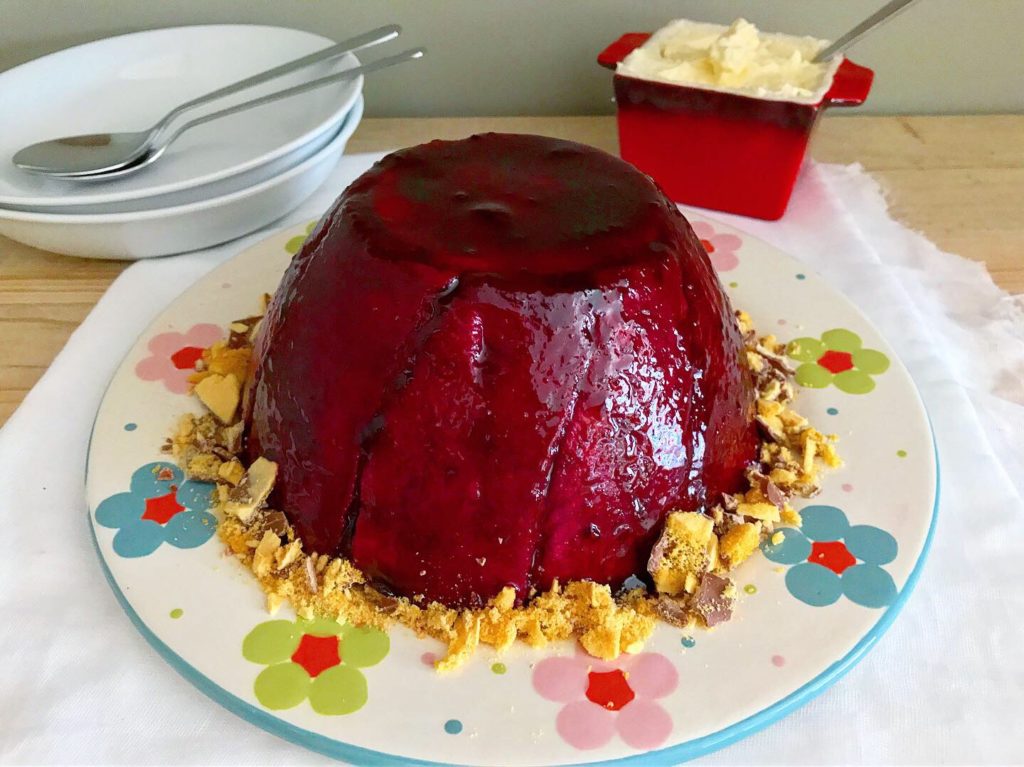
The addition of a glaze to the pudding make the whole things shine like a jewel, and adding Meadowsweet Cordial to the just whipped cream makes the whole thing sing of early Autumn. A splash of Kinsale Mead, an alcoholic drink made from fermented honey, cherries and blackcurrants, is another nice way to bring a local flavour to the whole dish. And anyway, what is pudding if there isn’t some booze in it somewhere!
A note on the bread used here: I would normally never advocate using white slice bread in anything, but the fact is that it does make a very good structure for this pudding, so I allow it! A half sliced pan is enough for this recipe, and if you can, leave the bread out for a few hours before using so it has dried out a little.
Ingredients:
- Half pan sliced white loaf
- No less than 1kg of fruits, fresh or frozen (I used blackcurrants, redcurrants, wild blackberries and bilberries)
- 175g either golden caster sugar or coconut blossom sugar
- Generous glug of Kinsale Mead Wild Red Mead
- 150ml of whipped cream
- 1tsp Meadowsweet Cordial
- 1 chocolate covered honeycomb bar, smashed
- Meadowsweet Flower to garnish
Method:
- Into a large, heavy bottom pan, place your berries and sugar and bring just to a simmer for enough time for the fruits to break down a little and release their juices.
- Place a sieve over a bowl and empty out the fruits, collecting the juices underneath. Allow to drain while you prepare your pudding bowl.
- Butter a 1 litre pudding bowl generously. Set aside.
- Remove the crusts from each slice of bread. Flatten each slice slightly with a rolling pin.
- Take one slice, place the base of the pudding bowl on it and cut around the circle using a knife. Cut two slices into triangles, cut the rest into rectangles.
- Take the collected juice and dip each slice of bread so that it has taken on colour and flavour but can still hold itself.
- Assemble as follows: start with the circle and place that in the bottom of the bowl. Then the rectangles – overlap them slightly to create a seal. This will also create a pleasing look, kind of like a Bundt cake tin. Then add in the fruits and pack them in tightly. Finally, dip the triangles of bread and place over the opening to seal the whole thing up.
- Cover the top with either the bowl lid, or a piece of foil, and place in the fridge to set for a minimum of 8 hours, but longer is better.
- Decant the fruit juices into a airtight container and set aside (don’t put in the fridge).
- When ready to release the pudding from the bowl, bring the pudding out of the fridge and let it sit at room temperature for about 30 mins.
- Take off any covering and place a plate over the top. Hold firm and then quickly invert. The pudding should drop out easily. If you have used a plastic pudding bowl, give it a gentle squeeze all around until you hear the pleasing thunk of the pudding hitting the plate.
- Add the the fruit juices back into a saucepan and add in the Mead. Reduce slowly over a low heat until the mixture is thick and syrupy enough to coat the back of a spoon.
- Generously glaze the pudding all over with a thick layer of the syrupy fruit juice. It should set almost instantly.
- While the glaze is setting, whip the cream. Just before it is fully whipped, add in the Meadowsweet Cordia, and then whip again for a few more seconds until it is fully combined.
- To serve, garnish the pudding with a sprig of fresh Meadowsweet, and around the base of the pudding scatter the broken pieces of chocolate honeycomb. Serve with a generous dollop of the Meadowsweet Whipped Cream.
- Best served with a glass of something crisp, cool and fizzy!
Enjoy….

